Text
THE WIZARD OF OZ, 2018
Birmingham Repertory Theatre Company

The Wizard of Oz (2018) produced by the Birmingham Repertory Theatre Company and directed by Liam Steel is the latest rendition of the classic tale in the “Merry Old Land of Oz”. After going on the Rep backstage tour and seeing some of the behind-the-scenes working progress of the production (props in making, costumes sketches and parts of the set model box), I’ve decided to go and see this production on the 7th of December 2018.

The 1939 film under the same title was my first introduction to musical theatre and films, and ever since then, it holds a special place in my heart. Going in to see this production, I was very curious about what direction it will take and whether it will stay true to the source material without imitating the film. And after seeing the production, I’m glad to say that it has all the elements that fans would recognise but with some slight changes that give it its own identity.

Tinman and the Apple Trees
As a design student, I can’t help but examine the sets and costumes design whenever I go to see a production, and in this case, I was especially impressed by the art direction the production took. The set designed by Angela Davies and the costumes & puppets designed by Samuel Wyer throws a modern twist to the world of Oz with the fun aura of the 1940s-60s. Dorothy no longer wears a dainty blue dress with pigtails but a rugged denim overall and hair tied back instead, and her Ruby Slipper is now Ruby Boots. The “king of the forest” is now a lioness and the Great Wizard is in fact, Ms. Oz. Glinda the Good Witch now dressed in a glamorous robe with a retro microphone on her hand replacing a wand. And the Wicked Witch of the West is played by a man who wore black patent high heel boots and drags makeup. Furthermore, paired with a cast of lively ensembles that played as a caricature of celebrities’ stereotype in the mid-20th century (the bad boy “Elvis” Crows and the glamorous “Divas” Apple Trees), it is hard not to be delighted and smiling throughout the show.

Costume design for Dorothy

Josh Vantyler starring as Wicked Witch of the West
Rainbow, which is an important motif in the film and novel, is the main inspiration for the design. Neon light frames were used to form a modern rainbow and the yellow brick road is now made up of a series of glowing yellow staircase. And as each scene and location changes, a different colour from the rainbow occupied the stage, for example, blue predominated the Munchkin land scene, yellow in Scarecrow, purple in Tinman, orange in Lion, and of course Green in the Emerald City so on and so forth. The same principle applies to characters too as a strike of red will interrupts the stage whenever the Wicked Witch appears. This clever use of colours effortlessly communicated different locations, characters, and atmospheres through simple visuals that even young children, who are the main targeted audience, can understand. Additionally, it also serves as a great narrative device and gives a visually satisfying aesthetic. I was inspired by this concept and was extremely impressed by its multiple functions in a live performance.

Puppets Munchkins and Glinda
A social commentary?
The new changes blew a breath of fresh air into the production but most importantly, it also a subtle social commentary on contemporary society. Although the show did not focus on the gender switch of Lion and OZ, and they’ve only played the reversed expectation of Oz as a light humorous moment, this decision is not just for a punchline of a joke. The same goes for the casting choices and costumes designs for Dorothy and the Wicked Witch as well- they are not just mere gimmick or aesthetic choices.

Chisara Agor as Dorthy
In fact, the changes are a sophisticated call to raise the awareness of the issues of race, sexuality and gender roles by indirectly comparing itself (now day) with the 1939 film (the past) by showing the audience what has changed. By doing this, it reflects the increasing acceptance of race and LGBTQ community in contemporary society, and it shows how the gender roles assigned by society could be wrong and inappropriate. Who said the kind-hearted girl have to wear a dress and heels and why must the powerful and respected Oz be a man? What’s wrong with seeing Dorothy played by an actress of colour and why can’t a man in drag act as the Wicked Witch onstage? I’ve asked myself these question after the shows and I cannot come up with an answer. This is because there is nothing wrong with them and the only reason that these thoughts even came up is because of the assigned roles and social norms that society has inflicted on us.
“Theatre is a mirror of society”, and it is very true in this case. I really appreciate how the directors and designers introduced these social issues to the audience in a non-aggressive manner while staying true and respectful to the original source materials. It gave me a very enjoyable night as well as meaningful afterthoughts that question myself as a member of the society and as a designer.
37 notes
·
View notes
Text
Robert Wilson’s “Walking”, 2012
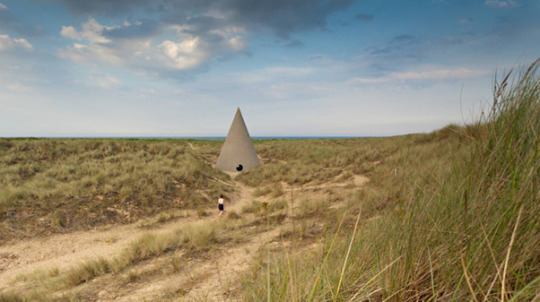
“Walking” is a project created by Robert Wilson in collaboration with Theun Mosk and Boukje Schweigman. Commissioned by Norfolk & Norwich Festival, this is a part theatre, part installation, and part immersive experience that explores the landscape, times, movement & speed, the audience relationship with nature, and the audience relationship with each other etc. And Wilson successful used all these elements to create an experience that is sensory and phenomenological.
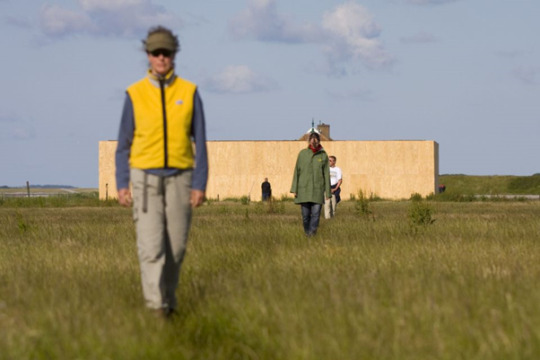
In this experience, the audience were stripped away from their devices and were instructed by the yellow coat “angels” (the guides) to walk in an extremely slow pace through a 3 miles route in a remote landscape of Norfolk. Every member of the audience has to keep a steady pace and distance away from each other and they were not allowed to talk or interact, they must only walk.
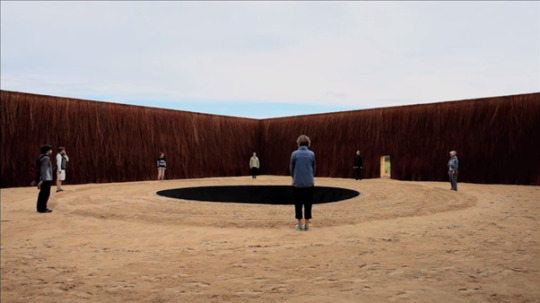
The first installation- at the start of the walk
On their journey, they will encounter several architectural installations that have been set up by the artists, each with an intention to provoke an emotional response from the audience and to heighten their senses. Wilson meticulously designed this path to manipulate the audience’s sensory feeling in the hope to change the way they view and interact with the landscape.
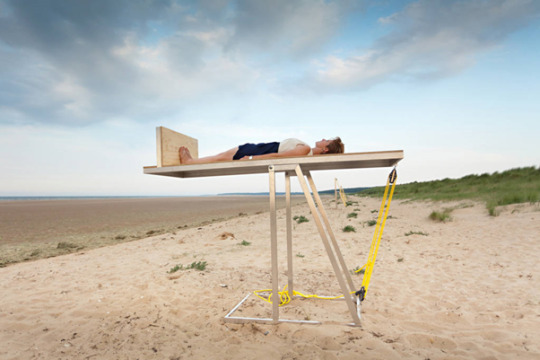
The last installation at the end of the walk- audience step onto these beds and was slowly pulled backward by the angels until they end in a horizontal position, looking at the sky.
When I first heard of this project, which is a year ago, I did connect with or understand it at all and it seems to me that this is just one of those pretentious “arty” projects. But now, my view has changed after learning about semiotic and phenomenology and gaining more knowledge about performance/ spatial design.
I believe that the reason that I did not connect with it in the first place is because this is a purely phenomenological project that relies solely on the audience personal first-hand experience of the journey. Unless you embarked on the journey, you cannot really imagine or predict the effect it will have on you. And from reading the reviews and interviews, every single audience has a different experience or interpretation of the journey.
Wilson purposely stripped away everything from the audience, materialistically and mentally, there was nothing to distract their minds which makes the walk just about their 5 senses and experiences. And for me, it is extremely difficult to imagine how this would have felt like- not really thinking about anything at all but just being completely emerged and absorb into the spaces and the repetitive act of walking at that moment of time.
Reflecting upon it, I can now understand the meaning and concepts behind this project which is why it was so successful and powerful for the audience. It has also opened up my mind about these kinds of more obscure and contemporary types of “performances” and I would definitely love to participate with them in the future if I got the chance to.
Reference
Hydar Dewachi, 2012. Robert Wilson “Walking”. [online video] Available from: https://www.youtube.com/watch?v=T8ih4GddMc4 (accessed on 19. 11.2018)
Norfolk & Norwich Festival, (n.d.) walking. Available from: https://nnfestival.org.uk/about-us/past-festivals/2012-2/ (accessed on 23.11.2018)
2 notes
·
View notes
Text
Earth Hall, Natural History Museum London
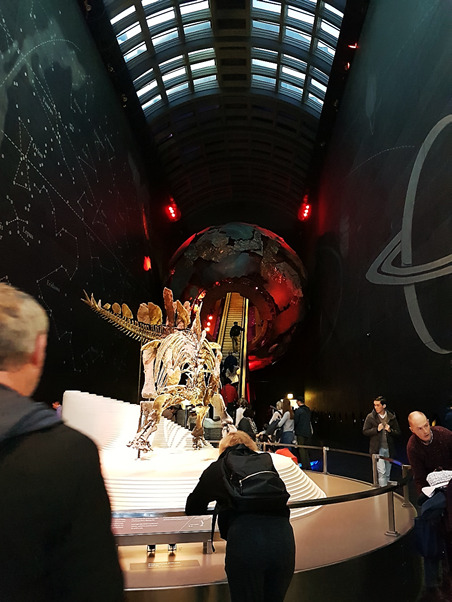
I went and visited the Natural History Museum on my trip to London and instead of entering the museum through the main entrance (Hintze Hall), I entered through the side entrance located at Exhibition Road. Once I went in, I found myself in this incredibly designed atrium and greeted by the stegosaurus.
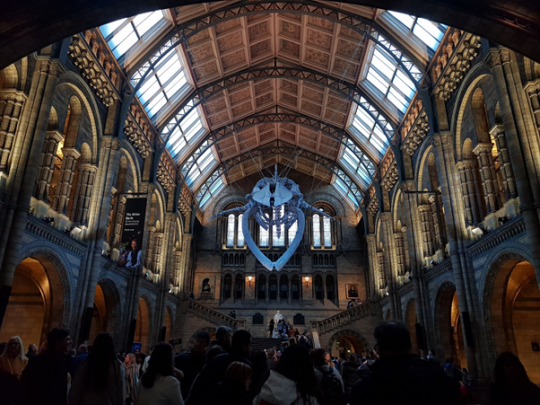
Main entrance- Hintze Hall
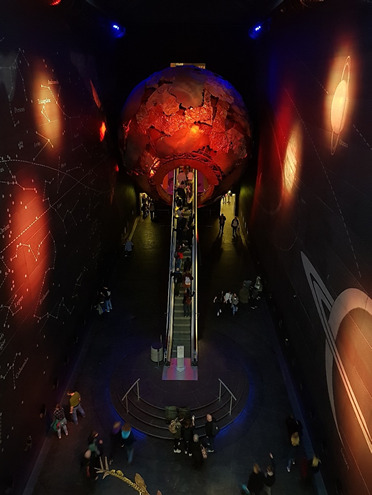
Earth Hall
Different from the Hintze Hall’s grand and traditional aesthetic, the Earth Hall was much more modern looking, and it communicates a geological scientific impression- which is suitable as this part of the museum (the Red Zone) that is about the geology of the earth. The Earth Hall atrium is dark with theatrical coloured lightings highlighting the display. This creates a very dramatic effect and my attention was immediately pulled toward the centre displays. Illustration of stars and planets are blasted across the walls, forming a celestial map, and the museums’ gems, moon rocks and minerals collections are displayed in these walls. To finish off, an enormous globe made up of metal plates with an escalator running through it takes place as the centrepiece of the space, pulling all designs elements together.
Designed by Neal potter in 1996, the intention was to persuade the audience to visit the upper galleries by literally “pulling” them up. This was a very successful design because as soon as I went into the hall, immediately all I want to do is to go on the escalator without even knowing what is waiting for me on the upper floor. And it has a likewise effect on other visitors as I notice everyone just head straight toward the escalator and there was an overall sense of excitement amongst the crowd.
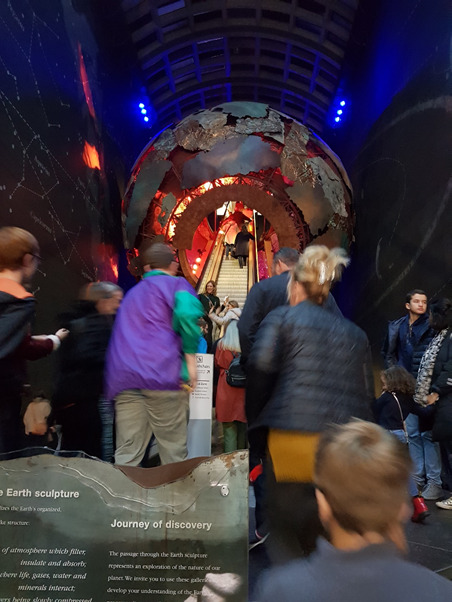
The reason why I engaged with the design so well is that not only it is a wonderfully crafted artwork that makes a great first impression, but furthermore, it is an interactive experience. It is something that involved multiples senses rather than just sight. I can physically touch the escalator, see the lighting, colours, textures, and materials of the globes, smells the faint but distinctive scent of metals, and listen to the soundscape of the inside of the globe and the excited mutters of people. These senses in conjunction with the strange feeling of being in a new and unfamiliar are what made this experience so memorable for me.
Side note:
Could this experience/ structure be considered as an immersive performance? There’s an audience (the visitors) that travel to the theatre space (the museum) and enters the performance space and interacts with the performers (the Globe). Once inside, the audiences get to witness a live show of lights and sound and they can pick up on the narrative of the performance (the formation of the Earth).
It has all the elements needed for a performance and when broken down to its core, it’s no different from contemporary immersive theatre such as Punchdrunk's productions. If that is the case, what is the difference or how do you classify different forms of experience/ performance?
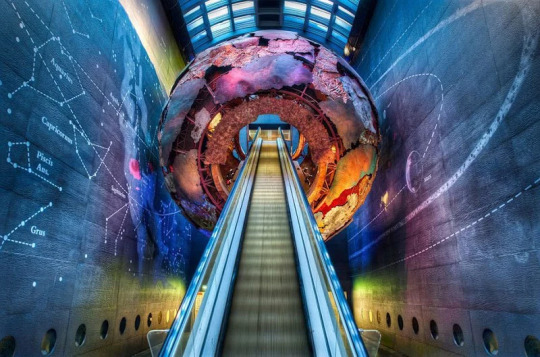
Most importantly, the structure act as an immersive device that holds the visitors and physically plus mentally transports them into a new space. The short escalator journey gives the visitors a new mentality and prepares them for what they should feel and what to expect. In a literal and metaphoric sense, the structure is a gateway to a new world – which calls back to whimsical tales such as Alice in Wonderland and Narnia: the lion, the witch, and wardrobe. It evokes a sense of playfulness and the desire for adventures and discoveries. And considering the main target audience of the Natural History Museum is families and children, this will greatly appeal to children and hopefully in doing so, it can also inspire a genuine interest from them to learn about the Earth.
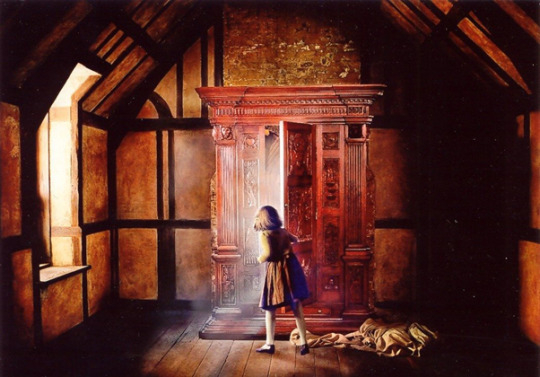
#experience#case study#naturalhistorymuseum#neal potter#inspiration#performance#immersive#exhibitiondesign
0 notes
Text
The Daylit Gallery, V&A
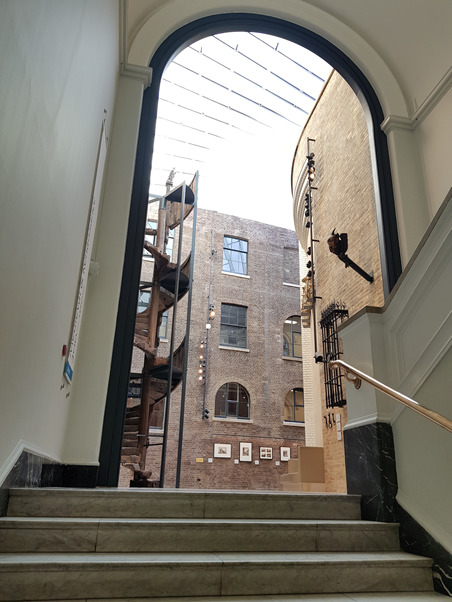
Upon reflection, the Daylit Gallery is my favourite gallery in the V&A due to the design of the space and the initial feeling that I’ve got from seeing it. The designer has created an exterior environment within an interior space which gives a completely different atmosphere from the other conventional and traditional galleries. When I was in the space, I felt like that I was outside which is bizarre but amusing at the same time.
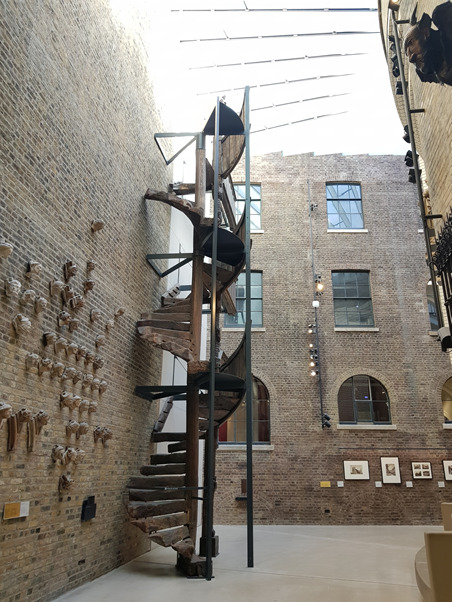
This space used to be an outdoor void between building providing daylight and utility area. It was transformed into a practical gallery space in 2002 by MUMA (McInnes Usher McKnight Architects) as part of the V&A’s FuturePlan development programme. They have preserved the brick wall of the building as part of the interior to create this sense of the outdoor environment as well as conveying the narrative of the actual space (its history) and assisting in creating a narrative of the exhibited items (makes the gallery seems like a Renaissance courtyard). This is a beautiful demonstration of multilayer storytelling.
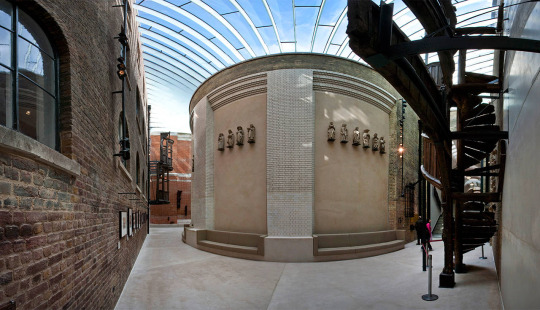
The showpiece of the gallery is be the semi-circular glass roof that’s allows a wealth of natural daylit to pour through, hence the name “Daylit”. This is such a genius idea because it is the natural lighting that enhances and gives the gallery its outdoor quality. It is also suitable for the background narrative of this space as well as the performance narrative (the story of the exhibition) as well.
Additionally, the change of lighting and mood can act as a breath of fresh air for museum visitors that have spent their time trapped indoor as it allows them to reconnect with the outside environment without having to exit the building. This is especially true for me because having been in the V&A for more than 3 hours at that point, I was slowly getting tire and start to experience the “museum fatigue. Thus, when I step foot into the daylit gallery, my mood and concentration were lifted again and it was pleasant that I was able to experience the daylight again.
Reference
V&A, (n.d.) The Daylit Gallery. Available from: https://www.vam.ac.uk/articles/daylit-gallery (accessed on 21.11.18)
0 notes
Text
Revisiting the V&A Museum
After learning about the taxonomy of spatial function and the importance of the whole audience experience, I’ve decided to revisit the V&A and the Theatre & Performance Gallery with the new awareness in order to understand the full visitor experience and how the different spaces could affect them.
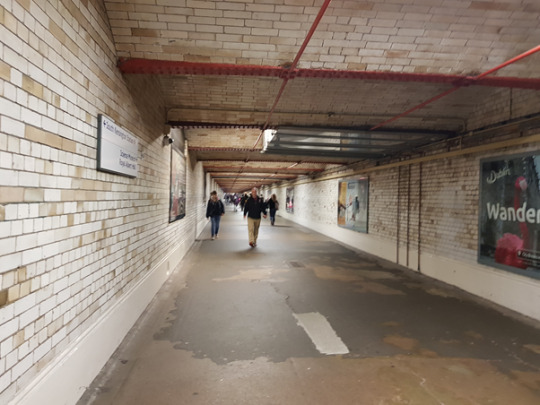
I travel to the museum via the London Tubes which this by itself is a very “London” experience. And to my surprise, there was an underground tunnel that goes from the station and will lead the visitors straight into the V&A. The visitors don’t even need to go out of the underground to get to the museum, thus, their experience will not be affected by the outside environment. This could play a small but significant role in the enjoyment of the museum trip because for example, if it was a horrible and gloomy rainy day, the audience will be sheltered from the weather.
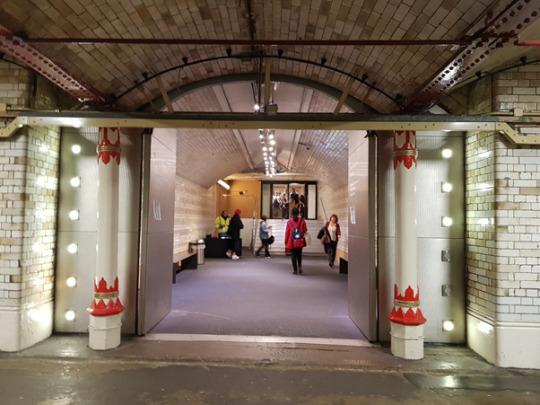
V&A Tunnel Entrance
Once I was in the V&A, I took a more natural navigation route and just follow where my eyes took me to as I feel like this is how regular visitors would act like. I notice that I was drawn more by the bigger and grander galleries such as the Raphael Cartoons Gallery, the Medieval & Renaissance Gallery, and the Cast Court. This is mainly because of the astonishingly impressive exhibit items and the sheer gigantic sizes of these gallery spaces.
I remember when I first walked into the Raphael Cartoons Gallery, I immediately took a big gasp as my eyes and brain were struggling to comprehend the vast space of the gallery. This experience was purely phenomenological as I did not even know what was displayed in this gallery or its significance. It felt otherworldly as I did not expect there would be such a great space within this intricate building and the contrast of the vast gallery with the other compact galleries helps to emphasise this feeling. In the end, I was more fascinated by the gallery space rather than the Raphael’s paintings.
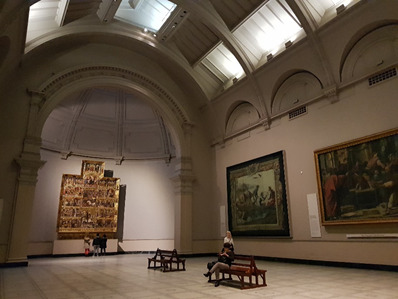
the Raphael Cartoons Gallery
Similarly, I’ve also experienced the phenomenological sense when I saw the craftsmanship of the works in the Cast Court and in the Medieval & Renaissance Gallery. I could not believe that these colossal elaborately crafted objects were real and it is standing right before my eyes.
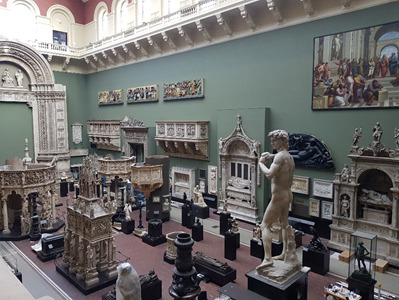
Cast Court
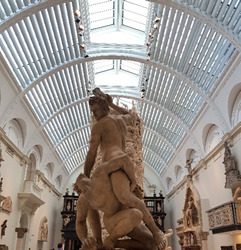
The powerful impacts of these impressive galleries made me question how the T&P Gallery stand out from them and how can visitors be transitioned fluidly from the experience that they’ve gained from these performance spaces into the T&P Gallery.
The size difference between the gallery spaces is incomprehensible therefore the T&P Gallery cannot provide the same phenomenological impact as these galleries. However, this also means that the T&P Gallery have a quality that these galleries do not have- the intimacy between the audience space and the performance space. The visitors can go up close to the exhibit items and examine them closely, and these items could be something that they remember or have experienced. This is what makes the T&P Gallery and its subjects unique therefore when designing, I could utilise these elements to draws the visitors in and create a bigger influence on them
0 notes
Text
A Taxonomy of Spatial Function
The Audience Experience of a Space
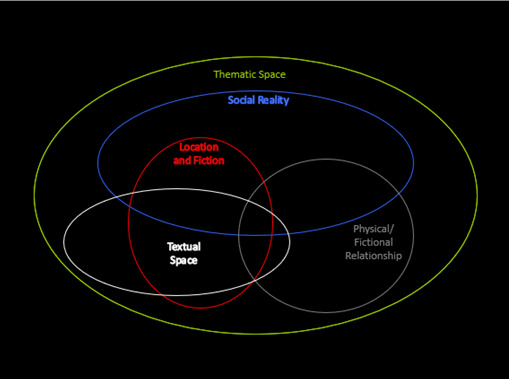
The taxonomy of spatial function was a framework proposed by Gay McAuley in her book Space in Performance (1999) that examine the relationship between the audience and the performance by looking at the space in which the two come together. It basically investigates all the different spaces within a performance and considering how each space can affect the overall experience and how they create a meaning together – the Thematic Space.
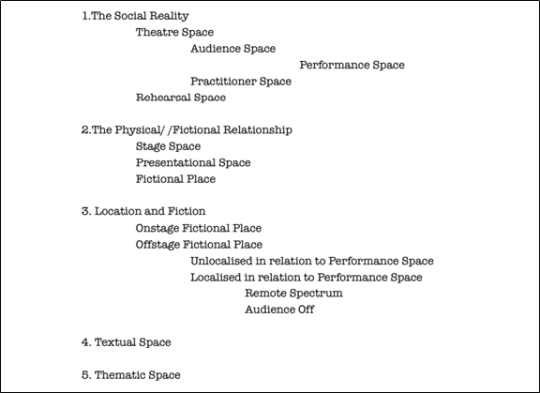
It is important to consider all these spaces when designing for an exhibition/ space because all of them will have a certain effect on the experience of the “performance”. The external context and environment of your design must be considered as your design does not stand in an empty space, it is a part of an existing landscape. The audience’s response and approach to the design is key to create a successful design hence the visitor’s introduction to the performance is “crucial to preparing the visitor for the experience.” (Lorenc, Berger and Skolnick, 2007)
The Holocaust Exhibition, Imperial War Museum London

An example of this is the design for the Holocaust Exhibition in the Imperial War Museum London. Visitors enter the building through the entrance (Theatre Space) and immediately they are met with the atrium (Audience Space) that displays these amazing aircrafts and machinery of war. The grand building and the displays in the atrium are a spectacle in itself and it gives a sense of wonders, which to some extent acts as a glorification of war.
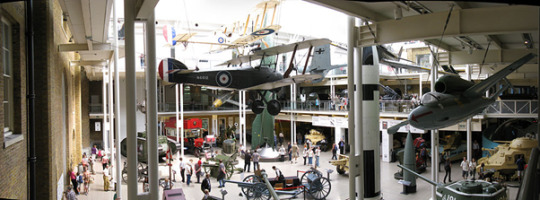
Thus, it would be extremely inappropriate for the visitors to travel from the atrium with the uplifting mood and then to plunge straight into the heavy topic of the Holocaust. The visitors are not going into the exhibition with the right mindset and it is not hard to imagine that they would feel uncomfortable and strange.
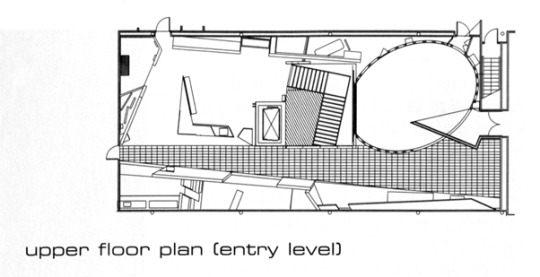
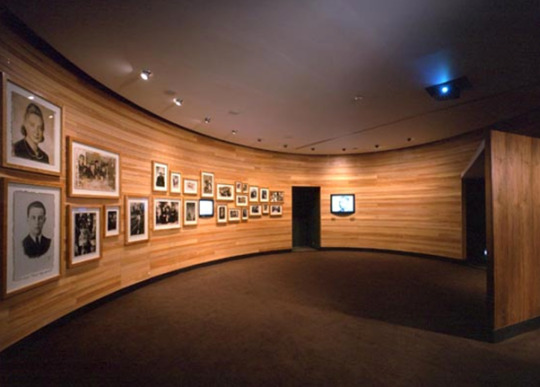
To solve this problem, the designers created a space called The Drum between the atrium and the exhibition that acts as a buffer. The Visitor will enter and exit the exhibition through the Drum and in this space, they are allowed to calm down and have a moment of reflection. The Audience Space and the Performance Space are entwined in the Drum, hence there will be a smooth transition into and out of the exhibition.
Also, the designer has thoughtfully planned out emergency exits and back of the house spaces (Practitioner/ Rehearsal Space) throughout the exhibition space as they understand that this is an extremely emotional and sensitive subject therefor the visitor can leave at any point of the exhibition if they need to have a break.
This exhibition perfectly demonstrated the approach to design with the overall audience experience in mind and how spaces were used to achieve the desired effects. The experience of the whole journey of traveling to and out of the exhibition (performance) was not neglected and as a result, the designers were able to identify and solves a huge problem of the clashes between the exhibition and the existing environment. If this were left to being unsolved, it could significantly lessen and damage the audience’s overall experience of the exhibition.
0 notes
Text
Bohemian Rhapsody (2018)
Bohemian Rhapsody is a 2018 biographical film depicting the musical career of British rock band Queen directed by Brian Singer.
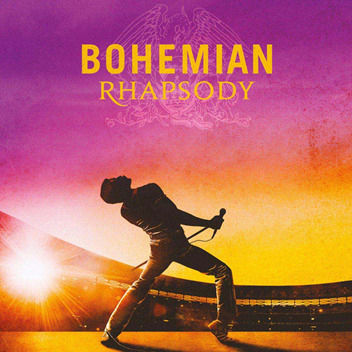
I went to see the film on the weekend and going in with no expectation, I came out of the cinema loving every second that I have experienced. Despite its many flaws, this is an extremely entertaining film with great acting, music and sound mixing.
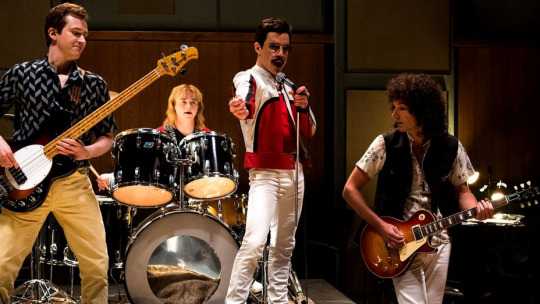
The film follows a very conventional depiction the band rise of fame, conflicts that came with it, and it ends with the reconciliation of the characters in leading up to the final climax of the iconic Queen’s performance in the Live Aid concert in 1985. Critics condemned the cliché narrative and gave it a poor score, but in contrast, the film received huge praises from the audience and continue to perform well in the box office. This is a classic case of critic vs audience. While judging from a critical viewpoint I can clearly see the flaws in its writing and direction and how the film is no way near a masterpiece. But as an audience, the film excelled in providing an entertaining and enjoyable film with relatable characters, an easy to follow story and incredible music.
Throughout the film, the audience was wallowed in the hits songs of Queen and paired with the quality audio equipment in the cinema, this musical experience was amplified to the max. Music is a universal language that speaks to people of all ages, races, and background. The film understands this, and they respectfully use the music of Queen to its full potential to create a powerful engaging story. It is clear that it has worked effectively as the top 6 of the latest UK rock singles charts are songs by Queen, which shows how well audience response to music including the younger generation who might never even heard of the band before.

The scene that that has the most impact on me is the Live Aid concert at the end of the film. The film crew and cast made an astonishing replica of the performance and brought it the big screen in high definition for the modern audience to experience what it must feel like as an audience seeing this live performance in the Wembley stadium in 1985.
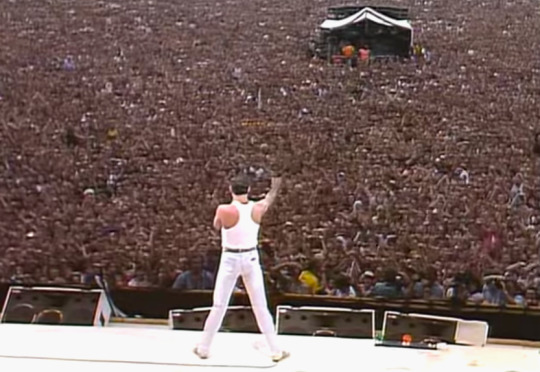
Photograph of the live aid concert with Freddie Mercury, 1985
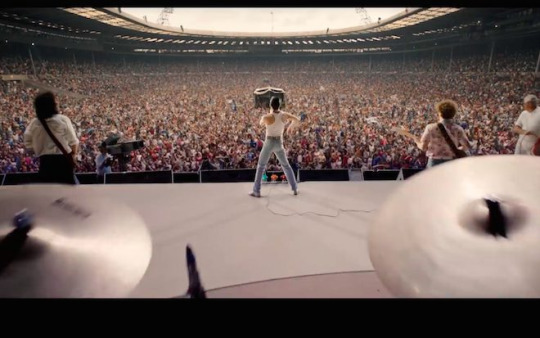
A shot from the film Bohemian Rhapsody, 2018
When I was sat in the theatre watching this scene, emotionally it felt like that I was in the stadium watching this live performance with the audience. it was an incredible experience as I can feel the rush of adrenaline in my body and my senses were purely indulged what I hear and see before me. The sight of the exhausted performers, the fanatic cheering and clapping from the audience, and the interaction between the performance and the audience reminded me at that point the reason why I fell in love with performance in the first place. This unity of individuals, all gather together in one space for one single purpose – to provide and to have a great time. Everyone is equal at that moment, and I believe performance is one the few devices that have such power over the public.
Seeing the people that worked so hard on stage and behind the scene to create this unity (although they are “fictional”) made me confirmed that I want to be a part of them and that is what I want to do for the rest of my life.
1 note
·
View note
Text
Being on Stage
Seeing from a different perspective
As part of the Rep backstage tour, we get to go into the main auditorium of the theater and stand on the stage.
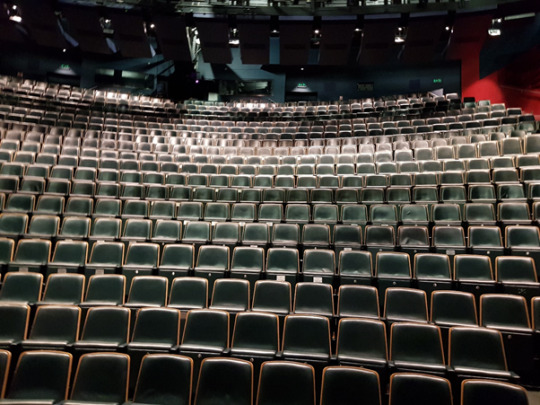
The House – main auditorium of the Rep
I asked our tour guide which part of the tour people respond to and impress by the most and she replied that it was the moment when they get to stand on the stage. This is also true for me.
As a common audience, the only interaction I have with the theatre is just sitting in the auditorium and viewing the stage from that perspective. Although the stage is within reaching distance from me, it always feels distant and unapproachable.
So, when I finally got the chance to stand on the stage and look out into the auditorium, I was engulfed with a strange emotion. Seeing the auditorium from the stage was a surreal experience. The separation between audience and the stage was gone, and the simple change of perspective made it feels like that I was transported to a completely different space although we are still in the auditorium.
Additionally, when seeing hundreds of closely packed empty seats right before you in such a close distance, it felt extremely overwhelming. And from that, I can understand how the actors onstage would feel in every performance when these empty seats become individuals faces of their audience and they can clearly see their expressions and responses to their performance. However, it made me grasp that maybe it is this feeling of anxiousness in the beginning and the rewards of appreciations from the audience after they’ve put on a successful performance is what motivate the actors to pursue what they are doing.
I think being on stage has such an impact on me because the new perspective was so different from how I have always seen the theatre. As an audience, I have always just seen the final product presented right before me and as a stage designer, I have always just thought and designed from the perspective of seeing it front on, never the other way around. Because of this perspective, I have never really considered the feelings of the people on stage and what do they see. This makes me question my approach to design. Yes, my main target is the audience as I’m designing an experience for them, but the actors are equally as important because they are the one who are going to use and interact with the design. Hence, I should consider the user’s experience as well as the audience’s experience when designing. I need to think about:
- How would my design affect their movements?
- Would it affect their character building?
- What about their interaction with the stage, with the audience or with other actors?
Etc.
1 note
·
View note
Text
The Birmingham Repertory Theatre Backstage Tour
The Birmingham Repertory Theatre (The Rep) was founded in 1907 by Barry Jackson and it is the only producing theatre base in Birmingham.
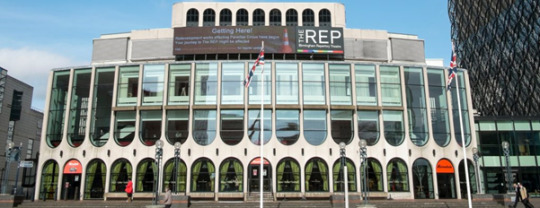
For my current exhibition design project, I decided to go on a backstage tour of the Rep to experience the atmosphere of a theatre’s backstage and to see the natural working environment of a producing theatre. Additionally, as a theatre-lover and a regular Rep-visitor, it is simply exciting and fun to enter the “forbidden ground” of the theatre.
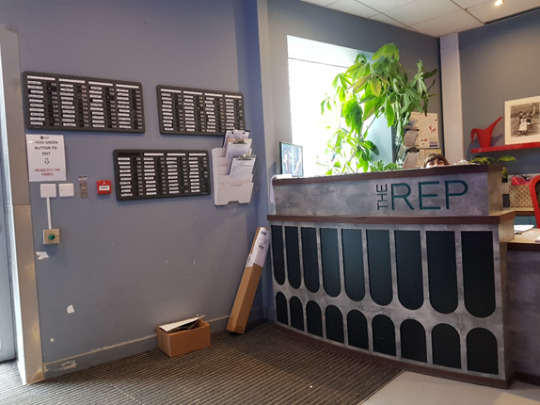
Reception at the Stage Door entrance. As we are not allowed to take photographs during the tour, so I do not have many exciting photographs to show.
The Littles stories of People
The backstage is exactly what I expected and unexpected as well. It is the same as how I imagined the theatre’s backstage would be like- a large tall space with workshops, studio lights, equipment, and mechanism etc.
However, it is also surprisingly messy. For example, I can see props and tools that were piled on top of each other on an embellished armchair and cables everywhere that could be potential trip hazards. But it is this chaotic sense that made me feel that this place is “alive”. The imperfect and disorganised environment reflect the fast nature of working in the theatre, and most importantly for me, it also reflects that the people work there are just normal common people who make mistakes and mess, people who are no different from me (the audience). This realisation causes a phenomenal feeling for me as the wall between the audience and the theatre was suddenly broken and immediately, theatre feel more approachable and “human”. Therefore, when being in this environment and seeing these mess, the experience felt a lot more intimate and engaging for me.
Throughout the tour, I noticed a lot of details that indicate little stories of the peoples that work in the theatre. My favourite would probably be the gigantic bag of Tetley Teabags that sat on the top shelf of the staff cupboard. It was probably the biggest bag of teabags that I have ever seen, this just shows the incredible amounts of tea consumed by staffs every day which further indicate the huge number of people that were needed in order to create a production.
Another highlight for me is the old, dainty biscuit tin with a masking tape handwritten label saying “Gold Leaf” on the workshop table. I love the randomness of the object and how it juxtaposes with the surrounding bulky heavy power tools. It is also something that myself can relate to a lot because I tend to keep empty biscuit tin and use it to store things as well. All these little traces of people amplify the experience of the tour and made it special for me.
Although these objects in itself are nothing special or fascinating, the human essence of them and the stories that they tell resonate with me throughout the tour. They are alive because the human story behind them gave them life. And this discovery is the greatest thing that I got out from the tour experience.
1 note
·
View note
Text
Punchdrunk’s Sleep No More – a new forms of theatre

Formed in 2002, Punchdrunk is one of the most successful and influential theatre company that revolutionised the practice of theatre and immersive experience. Their works crossed between theatre, installation, gaming experiences etc. and critics often have difficulties when trying to give a definite title the company because of the interdisciplinary nature of their works.
Sleep no more (2011)
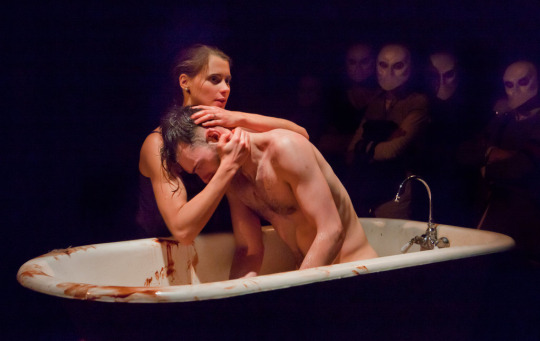
“Sleep No More” is the piece that gains them international fame and it remains as one of their most beloved and well-known productions. This “show” is a reimagination of Macbeth sets in the 1930s that is heavily inspired by classic noir films and the thrillers of Hitchcock. However, like all Punchdrunk’s works, Sleep No More is not a conventional piece of theatre. The production takes place in the “McKittrick Hotel”, which was a series of abandoned warehouses in New York before Punchdrunk took over and transformed into a real-life 1930s hotel. Upon arrival, the audience’s possessions were taken away and they were asked to put on a white Venetian style mask. Afterward, they were then sent off into the building with the instruction to not talk at all during the performance. Unlike traditional theatre experiences where the audience just sits on their seats and watch the story unfold before them, this show lets the audience to freely roam around in the fictional setting. Allowing them to choose their own path and characters to follow, investigating the set, and piecing together the narrative for themselves.

Punchdrunk Audience’s Mask
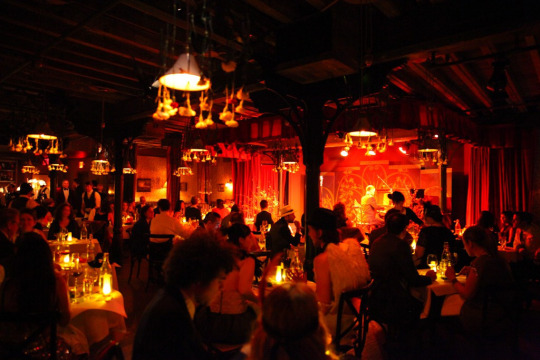
the Mckittrick Hotel, New York
What makes Punchdrunk unique and stand out from the theatre industry is their unconventional approach to theatre. The founder and director of Punchdrunk, Felix Barrett, explained that Punchdrunk’s fundamental idea is “to break all the rules in theatre” and to remove the “alienating” nature of traditional theatre. Realising the power of simple physical human interaction in the 21st century where everything is so accessible, they took a more interactive and filmic approach to theatre where physical interactions from the audience are encouraged. In the sense of a film, they dropped the audience directly into the middle of the scene and made them feel as if they are “inside a living movie” (Barret, 2015). This approach erased the separation between the audience space and the performance space by melding the two spaces together, which result in a powerful sense of emersion and personal involvement for the audience.
Additionally, in the sense of gaming experience, it gave the audience the power to make decisions for themselves rather than playing the same usual passive role in the theatre experience. This not only is a fresh take on theatre, but it will also encourage further concentration and personal engagement from the audience as they now have the responsibility for their own enjoyment of the show. This allows the audience to have their own adventure. Punchdrunk productions engage the audience through this incredibly immersive form of theatre that offers an experience that is much more active and sensorial, which at that time, the audience has never seen before.
Pushing Boundaries
Punchdrunk’s productions have all the elements of a live performance needed for it to be theatre, but they did not stop there. They took a step further and pushed the boundaries and definition of theatre in order to make the experience much more personal, immersive and enjoyable for the audience. They have analysed the limits of traditional theatre but also the characteristic of it that makes live theatre performances special to develop and improve the practice of theatre that caters to today’s audience. Punchdrunk’s practice also reflects the interdisciplinary nature of the creative industry and it shows the natural overlaps of different disciplines. Their works are prime examples of the idea that a practice cannot just be considered as a single discipline because of all the approaches, elements, thinking, creating process is inter-transferable and can be applied over the spectrum of the whole creative disciplines.
0 notes
Text
Psychoanalysis
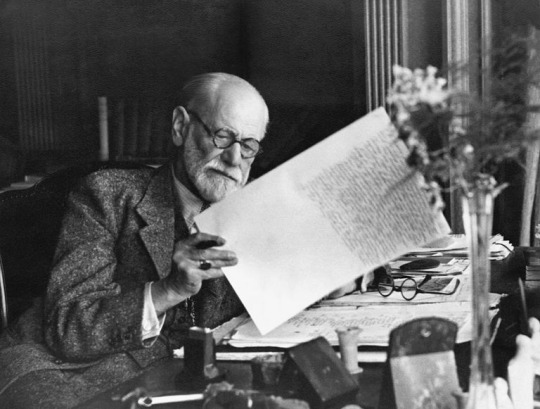
Founded by Austrian neurologist Sigmund Freud, Psychoanalysis is a set of theories and techniques that study the human’s unconscious mind. Established in the early 1860s, Freud proposed that there are 2 main sections of the mind- the Conscious and the Unconscious. The Conscious is the thoughts that we are aware of and it is only the tip of the iceberg of our mind. While the unconscious makes up most of our mind and it is the fundamental foundation of our personalities and behaviours. Hence Freud believed that by analysing our mind and making conscious of the unconscious mind, he can lift the repressed emotions and cure his patients. This idea revolutionised and pioneered the study of psychology and the treatments to mental illnesses.
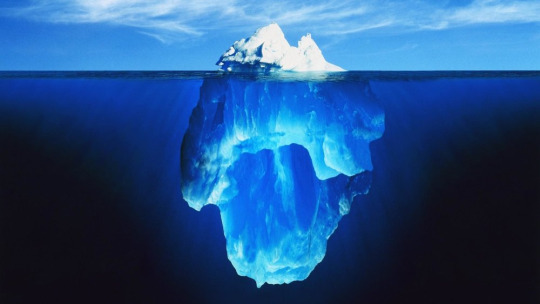
The study of psychology and psychoanalysis is a vast and whole new territory to me, and at first glance, it seems to be completely irrelevant to the discipline of design. However, given more thoughts, there is a lot more connection between the two subjects than one would think. I believe that it is extremely important and relevant for us designers to have some understanding of psychology and how the human mind thinks. This is because the core of designs is its clients, the intended audience. We are designing for a living person/ people. Hence, by understanding the human psyche and how they might act, we can create a design that will resonate and respond well with the intended audience.
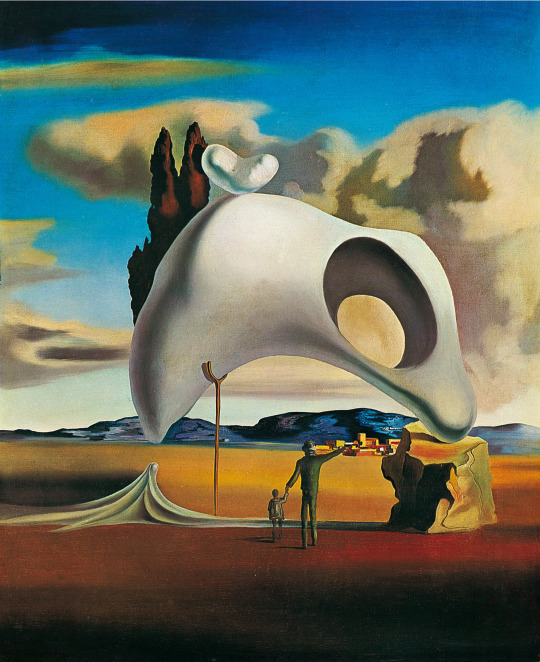
Additionally, the study of the mind is a great tool when designing. The idea of the unconscious mind is such a bizarre but fascinating concept, and it can act as a great source of inspirations. The subject has inspired generations of artist and designers, with the most well-known to be Salvador Dali and the surrealism movements. Because the unconscious mind has no constraints or limit to creativity, therefore I believe that there are endless possibilities and ideas that we can get hold of if we explore the subject in depth.
2 notes
·
View notes
Text
Exhibition Design and Casson Mann with Gary Shelley - Q&A
Who builds the exhibition?
The designer does the plan, concepts et cetera, Then the contractor realised the design
Educational or people’s engagement?
The most important thing is the audience engagement because they will only pay attention and learn once they are engaged.
In the UK, you must convince the UK National Lottery that the exhibition will attract visitor to get funding.
How would designers access the technology and do designers need to learn about it?
You do not need a lot of knowledge. If you need a certain technology for your design, you would need to consult a specialist. However, it is better to have the people to be part of your team or to learn it yourself.
Do research on technology. Go out and see the technology for yourself.
Should you value the objects or the space/experience more?
There is a constant fight between the designer and the curator. For the designer, it is the experience that is most important, but it is the other way around for the curator. Therefore you need to find a balance and you need to consider how do you allow the audience to intellectually accessed the objects.
Are there other ways to make costume alive?
- Pepper’s ghost
- Projection
- Posing
- Motion and inhabit by a character
- Wigs, but they are difficult work with as it is extremely hard to get the hair right
Can you not have a glass case?
No glass case is normally allowed in temporary exhibitions. If there is no glass protection, the object must be one arm length away from the audience.
You can also investigate the materials of the case. There is special no-reflection glass (low iron) that can lower the sense of a barrier.
Why are the Theatre and Performance so dark?
Costumes have to be in 50 lux, anything over will damage the items. Also constantly changing from light to dark when traveling through the gallery is straining to the eyes. So your design has to work with the gallery and darkness.
Additional notes
think about the continuity and cohesiveness- how do you ensure the visitors always know that they are in the V&A
sometimes, less is more- what is the message you want to communicate?
how are the objects displayed? - the height of the stand? the degrees of viewing?
0 notes
Text
Lecture about Exhibition Design and Casson Mann with Gary Shelley - Hollywood Costumes (2012)
Casson Mann is one of the leading museums, exhibition and interior design company in the UK. Founded in 1984, their goal is to “transform space, content, and media into beautiful, engaging environment.” We were fortunate to have Gary Shelley, director of Casson Mann to come and give us a specialist lecture on exhibitions they have created and their design process.
Hollywood Costume, V&A, Autumn 2012
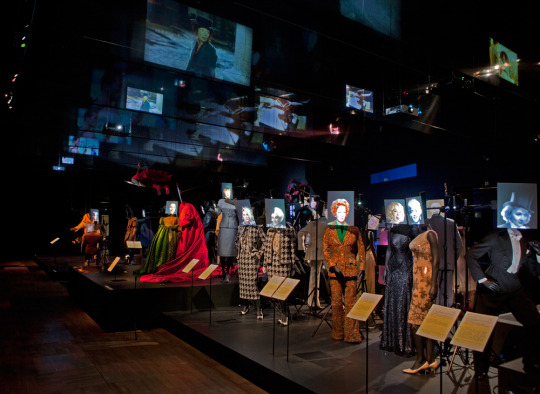
Working with the V&A, Casson Mann designed the Hollywood Costume exhibition showcasing 100 years of costumes and characters and portraying the process of creating characters. Gary explained that when working on this project, they worked closely with the client to work out the space and to develop the narrative of the objects (which is the costumes).
I was awestruck when I saw the images of the exhibition. Casson Mann has wonderfully combined the art of costume design with the art of exhibition design to bring together a beautiful and extravagant visual feast to the audience’s eyes. The dark environment conveys a sophisticated atmosphere that is reminiscent of a film studio with all the studio lighting and visitors were transferred to the location where the magic happened as soon as they have set foot onto the exhibition. Each gallery has a theme so as the visitor travels through the exhibition, they will follow the journey of the creative process where they can read the scripts, see the sketches and hear the conversations with the directors and actors.
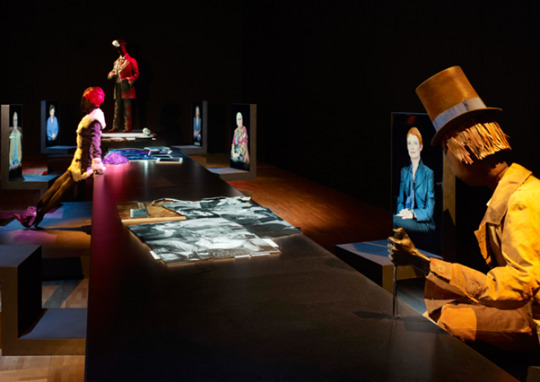
As seen in the image above, these interviews and sketches were also presented in an extremely creative and unconventional manner. Instead of just displaying them in a glass case, they have projected them onto tables and chair to create the scenery of a rehearsal and meeting room. These types of presentations add extra layers to the overall narrative an helps to create an immersive environment.
Technology
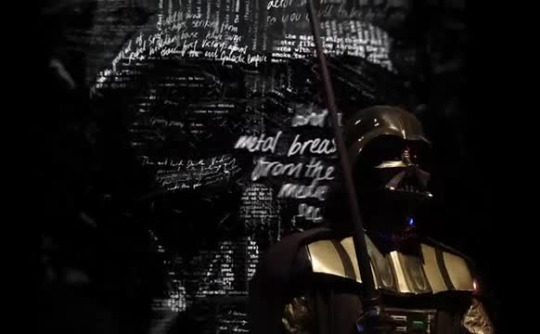
Using technologies such as projection mapping, they have incorporated film footages of the characters, animations, and typography beautifully to tell a complete and easy to understand narrative. With a single viewing, the audience can instantly understand the characters (and costumes) and their background without having to read a long paragraph of writing. This is a perfect lesson on the correct way of using technology in exhibition design for myself and everyone. Technology should be used for a clear reason in the design and not just for the gimmick.
Bringing costumes to life
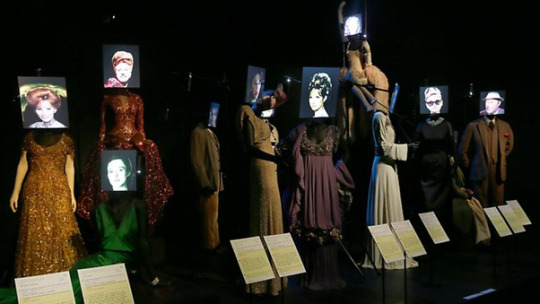
Apart from their use of technology, the aspect that I’m most impressed with is how they have managed to bring the costume “back to life”. Gary used the analogy in his podcast with the V&A that designing for this exhibition is like “putting the shredded skin back onto the snake”, the skin doesn’t look nice on its own but it looked good on the snake. The costumes need to be worn by the character in order to show their full colours and be alive. Obviously, they can’t have the actuals actors to wear the costume, therefore, they have to find a method to solve this problem.
The first solution they have come up with is the pose. “Costumes should always be posed” as Gary has explained to us. This will give a sense of movement to the costume and shows that it is a functional item rather than just a beautiful but dead thing. So, the costumes were posed in the manner of the characters. However, this is not enough. A face must be present for the audience to recognise the iconic characters, thus with the aid of technology again, they have put a digital image of the characters’ faces onto the costumes without damaging them.
Hearing this design process, I have learned that a major part of exhibition design can be simply broken down to problem-solving. As a designer, you must identify the problems- what works well, what didn’t, what you want to communicate etc. After that, the thing you need to do then is to solve the problems with your design.
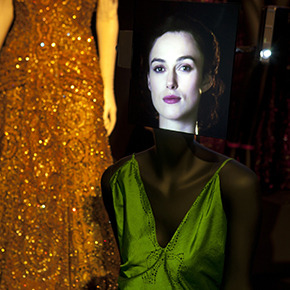
Side Note: Having an insight with a working professional was such a beneficial experience as it showed me the possibilities of exhibition design and how I should approach it. I was so inspired by all the work that Casson Mann has created and the depth of layers behind all the design decisions. I have more understanding of the quality that I should strive for with my designs and the criteria for my designs to be successful.
Reference
Adamson, G. (2016), V&A- Exhibition Design , [podcast], Available at: http://www.vam.ac.uk/content/articles/v/v-and-a-podcast-exhibition-design/, (Accessed: 03/11/2018)
0 notes
Text
The Art of Exhibition Design
Everything within a museum or gallery are designed and created to achieve a purpose and likewise, exhibitions are designed by designers that work around with elements such as space, objects, movements and figure etc. to communicate a message.
The Evolution of Exhibition Design
Exhibition design had evolved alongside the evolution of museums and gallery (see previous blog “The Evolution of Museums”). Even in the very primitive stage of museums where the concept of museums and exhibition were not realised yet, the concerns for how objects are being displayed and the arrangement of exhibited items were present. Using the Wunderkammers as an example, the collector arranges the object with the purpose of to create a visual impact in order to impress their guests and to show off their powers and social status. An alligator or some other huge exotic items were often a common centerpiece in these Wunderkammer and the whole room was covered with fascinating objects from around the world. The collectors created a fully immersive space and they know that a big, exotic centerpiece will create an impactful impression on their guest.
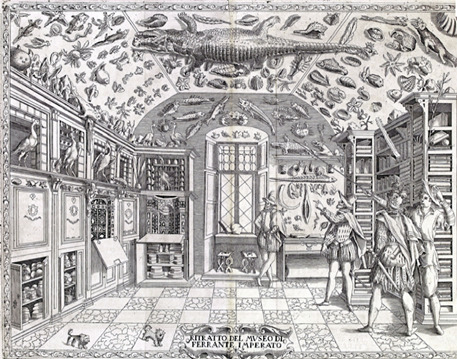
These Wunderkammers were very much about the displayed object and the focus was not on the interpretation or narrative of the objects. Early Museums follows this idea and they tend to display the objects in a very organised and strict manner. Exhibitions were cleanly lit and often arranged in neat rows so that the visitors can view the item in all angles and see its every detail.
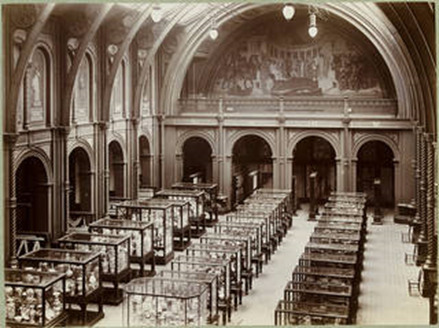
South Kensington Museum, V&A, 1886
This style of the display also has a lot to do with the way people perceive museums and the purpose of museums back then (see previous blog “The Evolution of Museums”). The audience of traditional museums was the educated and the upper class, and its main goals were to educate and preserve. This is clearly reflected in the designs of the exhibitions. Additionally, the grand architecture of the museums themselves also contributes toward the overall pristine and elite atmosphere.
Generally, when people think of museums and exhibitions, they would associate it with the above image (traditional museums). The idea the exclusive atmosphere still lingers amongst the common public, including me. However, I realised that this is not the case at all.
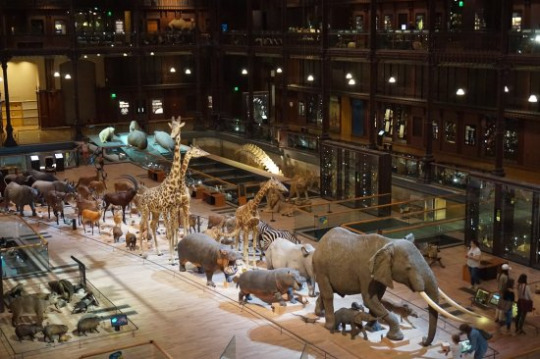
France Natural History Museum, Galerie de Paléontologie et d'Anatomie compare. Inspired by Noah’s Ark.
Modern museums have switched their focus to audience of all ages and backgrounds and their purpose is to provide an enjoyable experience as well as to educate. Therefore, exhibition designs now day concentrate more on the narratives and contexts of the exhibited objects in order to create a more immersive and engaging environment for the visitors. Presentation of exhibitions no longer follows strict rules and interactive elements were incorporated into the design. Exhibition start to take place in varies location (not just in museums) and technologies were used to aid the story-telling and interactive aspect. Every successful exhibition will look vastly different from each other and each will tell a different narrative. But the one thing in common is that they will provide an enjoyable, immersive and compelling experience.
So What is Exhibition Design?
Museums and exhibitions have experienced great changes and exhibition design now have a new definition which is “creating experiences in real time, utilizing space, movement and memory to facilitate multi-layered communication” (Lorenc, Berger and Skolnick, 2007). In another word, exhibition design is creating environments that communicate a message. And because of this new definition, the lines of exhibition design have been blurred.
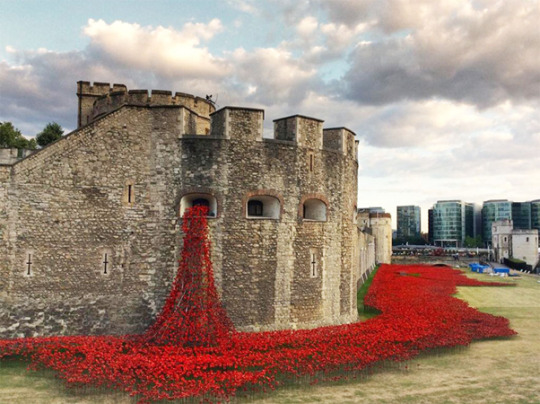
Poppies by Tom Piper, a commemoration of WWI. Is it an Installation or an Exhibition?
So What does it means to me?
Exhibition Design was a term that I was completely unfamiliar with. Before learning and researching about it, all I had in my mind was the pristine displayed of beautiful objects. I realised that I was so wrong and how small my perspective of the design discipline was
There are so many layers of thoughts and ideas within an exhibition design and it all revolved around the key objective of telling a clear and powerful story. And to archive that, the objects and its context, the exhibiting space, lighting, sounds, visuals elements, interactive and technology, the audience behaviors and many other elements must be taken account of. As an exhibition designer, your goal is to create an engaging yet functional environment that can communicate and connect with the audience. This duty is no different to the duty of a theatre designer or an installation designer.
Understanding this has completely changed my mindset and it opened a wide field of vision for me in terms of what I want to be and potential career opportunity. Originally my mind was set on being a theatre designer because I was so motivated and inspired by the process of set design. But when learning about exhibition design, I felt the same excitement as I did when designing for theatre which made me realised that what I’m really interested in is working with space and environment to create a narrative. The design process that I’m familiar with and adore can also be applied to when designing for different types of events as they all follow an overall objective which is to communicate. This made me truly understanding the meaning of working multidisciplinary and how I can be a flexible designer. Instead of categorising myself as a theatre designer, maybe I can consider myself as a spatial narrative creator?
Reference
Berger. C, Lorenc. J and Skolnick. L, 2007, What is Exhibition Design? , RotoVision.
0 notes
Text
The Evolution of Museums - what is its purpose?
Looking into The Victoria and Albert Museum.
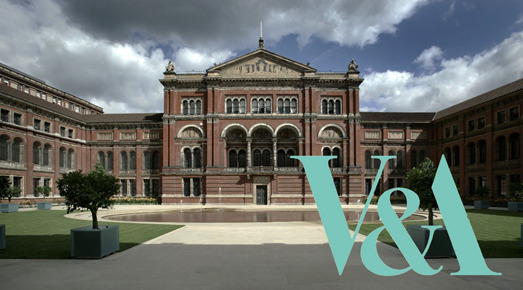
Founded in 1852 by Prince Albert, The Victoria and Albert Museum (V&A) was certainly one the first of its kind. As a museum dedicated to art and designs, its purpose was to maintain and improve the standard of the British art industry by “educating designers, manufacturers and the consumers”. (The V&A Story, n.d.)
Quoting from Henry Cole, the V&A’s first director, the museum should be a “schoolroom for everyone.” (The V&A Story, n.d.) This fundamental principle of the V&A directly reflects what was happening at that period in terms of how people see and uses museums.
Precursor of museums
Human has the tenancy to collect and preserve objects of extraordinariness and significance - from religious shrines to private collections of kings and royals. In 1600’s Europe, “Wunderkammer” or “the Cabinets of Curiosities” were extremely popular in the homes of the aristocrats. The Wunderkammer is a collection of “wonders”- ranging from artifacts to exotic animal specimens, that were all displayed within one room with no orders or structures. These cabinets were an indication of powers and social status as well as providing pleasures and entertainments to its collectors and their guests.
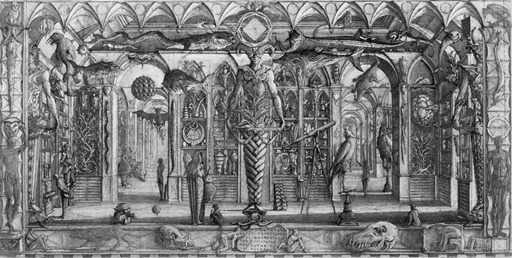
However, the spirit of collecting developed over time. People became interested in the context of the objects and there was an emergence of the urge for knowledge. This brought a whole new meaning to collecting which attracted a wider group of participants. They start to collect out of the enjoyment of study, and soon they realise that for these objects to have any meaning or significance, the public must learn about them. This leads to the first public museum, the Ashmolean Museum, to be opened in 1683, Oxford.
Traditional museum
The traditional museum has the purpose of gathering and preserving objects of cultural, historical, and scientific significances, conduct research into these objects and then present the information to the public.
Despite being a public establishment, museums were very much a place only for the elites. The immense gaps between the social classes mean that only the educated and wealthy were privilege to the enjoyment and experience of viewing the exhibitions in an established museum. The common public was excluded.
Modern museum
As time go by, the world and society have evolved and change. The discrimination against social class and race became unacceptable and society overall was more open and inclusive. This directly impacted how museums operate and brought new meaning to museums.
Rather than solely focusing on historical and academic researches, museums started to explore contemporary society and social issues. Exhibitions about cultures, diversity and the LGBT community et cetera were becoming increasingly common as a result of the boom of social movements in the late 20th century. For many, museums and galleries were a place to make a statement and a tool to let other people hear it.

Going back the previous statement, museums were also no longer exclusive. The target audience of museums and galleries shifted from the upper-class to peoples and families of all backgrounds. This change was reflected in how the mission of the V&A evolved from “to educate designers, manufacturers and the consumers” into “to enrich people's lives by promoting research, knowledge, and enjoyment of the designed world to the widest possible audience.” (The V&A, n.d.)
What’s Next?
Looking the statement of the V&A, the change of the word from “educate” to “enrich” intrigued me and it made me re-evaluate what is the purpose of museums in the contemporary society.
In the past the access and communication of information were difficult. But now we live in a world where there is an overflow of information and data that can be easily accessed with a tap of a finger. The idea of people going to museums just to see what the item looks like or to learn about items seems unrealistic. So why do people still visit museums?
The answer lies in the word “enrich”. Rather than about being able to see the items, the key point is the experience of viewing it in real life and how this experience enhances and/or further inspires you. Being in the same space with the objects and seeing it with your naked eyes (rather than from a screen/page) offers a different sensation because the objects are now “alive”.
Of course, the above statement is based on the idea that visitors are active learners, and/or they have a certain amount of knowledge about the items that are being displayed. However common museum-goers are not. This is because in now day, museums are no longer just a place of education, but a place of entertainment and leisure as well. Parents take their children to the museums on a family day out, couples go on a date to the museum, and individuals go to the museum as a pass time hobby. This extensive range of visitors means museums must be able to provide a well-rounded enjoyable, interesting and engaging experience for people of all ages and backgrounds. They must be able “to enrich people’s lives”.
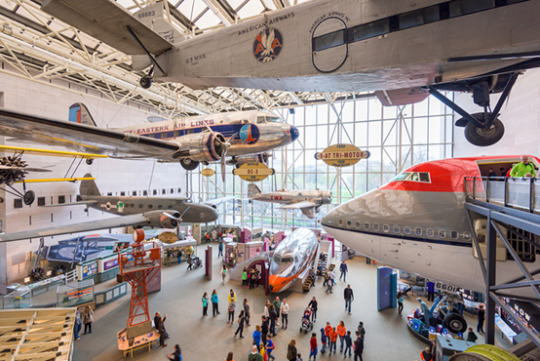
Reference
Lewis, G.D. (1998) History of Museums. Available from: https://www.britannica.com/topic/history-of-museums-398827 (accessed on 26.10.18)
V&A, (n.d.) The V&A Story. Available from: https://www.vam.ac.uk/collections/the-va-story/ (accessed on 25.10.18)
V&A, (n.d.) About US. Available from: https://www.vam.ac.uk/info/about-us (accessed on 25.10.18)
2 notes
·
View notes